A site has been launched that delivers 11,000 hours of Apollo 11 video and audio in real time to reach the first human surface on the moon

by
The spacecraft Apollo 11 carrying three astronauts was launched by the Saturn V rocket on July 16, 1969, at the time of the World Agreement, and on July 21, the same year, humanity reached the moon for the first time. NASA Johnson , a site 'Apollo 11 in Real Time' that can watch over 11,000 hours of landing on Apollo 11 in real time in commemoration of the 50th anniversary of reaching the moon in 2019 Space engineer and history researcher Ben Pfist has published it.
Apollo 11 in Real-time
https://apolloinrealtime.org/11/
Click 'NOW' on the top page to see the status of Apollo 11 in real time. The date and time to be played is shown on the right of the button.
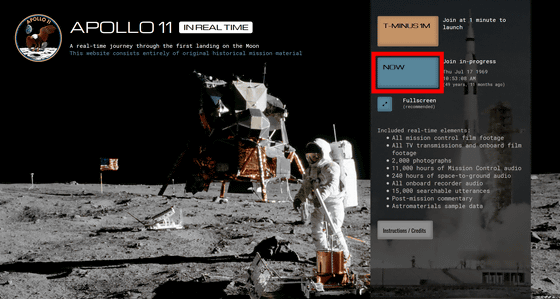
Then, the video and audio in the control room and spacecraft are automatically played back, and photos are also displayed. At the time of writing, Apollo 11 was on the

You can individually select and listen to over 30 tracks of audio, such as in a control room or in a spacecraft. For example, if you select 'SPACE ENV', it will switch to the communication voice of spacecraft and weather information.
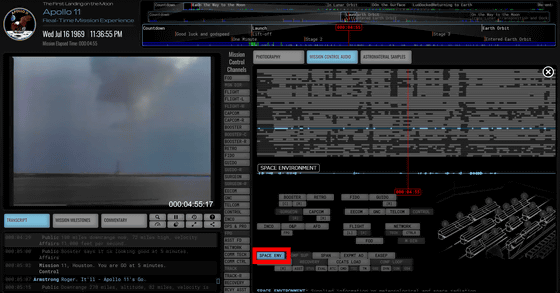
The control room's voice corresponds to the figure on the right, so you can listen to each seat. You can see the progress of historical great feats of 49 years and 11 months as live like through the internet. The roles of each department in the control room are as follows.
BOOSTER: Support from Apollo 11 launch to getting into orbit.
RETRO: Support until Apollo 11 returns to Earth.
FIDO: Apollo 11 support for all missions.
GUIDO: Manage and support system aspects such as Apollo 11 command ship computer.
SURGEON: Monitor the health of the crew, including heart rate and breathing rate.
CAPCOM: A unit that can talk directly with the spacecraft crew, communicate and communicate verbally.
EECOM: Apollo 11
GNC: Management and support of hardware such as control of Apollo 11 machine ship.
TELCOM: Monitoring of life support devices and power systems installed on the lunar lander .
CONTROL: Control and monitoring of the hardware component of the lunar lander.
INCO: Monitoring of communication systems of command vessels and lunar landers.
O & P: Procedures and confirmation about things done in Apollo 11 and the control room.
AFD: Assisted Flight Director (FLIGHT).
FLIGHT: Flight director with absolute authority in the Apollo program.
NETWORK: A unit that communicates with NASA's ground stations and collects data.
FOD: A liaison between the control room and the Johnson Space Center. The chief director of the Johnson Space Center has been appointed.
N DIR: A liaison between the control room and NASA. But it was never particularly anything usually, is EECOM person in charge at the time and 'was always looking at the console to have someone in the N DIR' testimony has been.
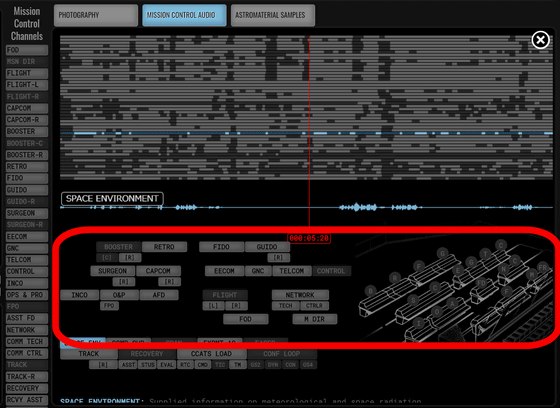
Also, if you click the rightmost tab 'Atromaterial Samples' on the right of the screen, you can view the photos and data of the actually collected sand while watching the crew of Apollo 11 collect sand on the moon surface in the movie I was able to do.
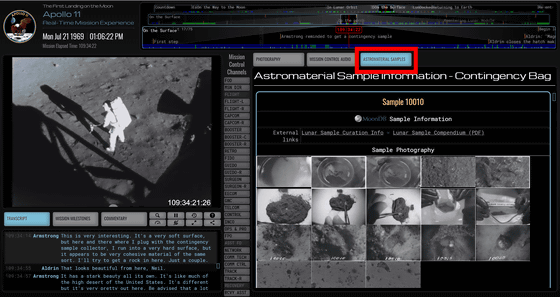
The launch scene of the Saturn V rocket has already ended in real time, but if you click 'T-MINUS 1M' from the top page ...
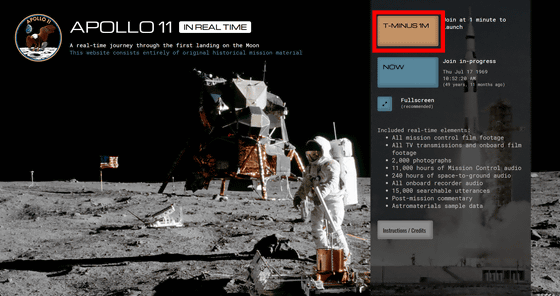
It can be seen again from the launch. Since the tension around the launch pad and control tower at that time is transmitted from the sound and the movie from the sound and the movie, please be sure to look at your eyes with your own eyes.
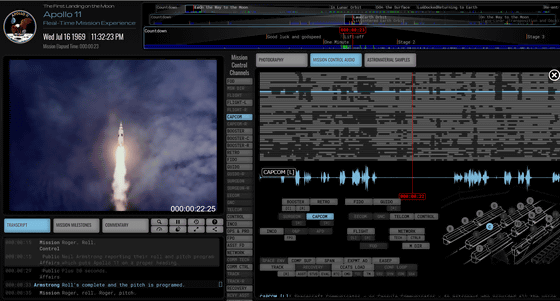
In addition, if you can not wait for real time, you can watch your favorite scene from the seek bar at the top of the screen. The top bar is the entire mission, the middle bar is 9 hours wide and the bottom bar is 20 minutes wide to select the scene. For example, by setting the cursor around 109 hours and 24 minutes as follows, you can hear the statement by Captain Armstrong that 'This is a small step for one person, but a great leap for humanity.' You
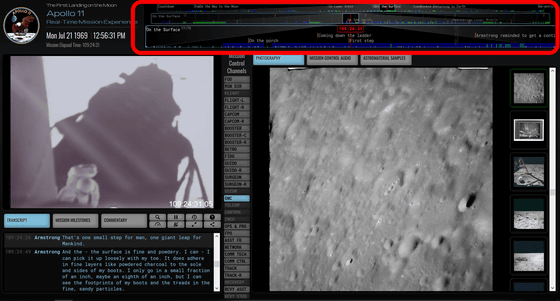
According to the
75 hours 49 minutes 50 seconds: The propulsion engine of the commander-machine ship is ignited and it enters the orbit of the moon.
100 hours, 40 minutes, and 02 seconds: The lunar lander is disconnected from the command ship.
-102 hours 45 minutes 39 seconds: The lander lands on the moon.
109 hours 23 minutes 28 seconds: Captain Armstrong finally lands on the moon.
124 hours 22 minutes 00 seconds: The lander ignites the engine and takes off the moon.
128 hours 03 minutes 00 seconds: The lander docks with the commander Colombia.
135 hours 23 minutes 42 seconds: Apollo 11 leaves the orbit of the moon.
-195 hours 03 minutes 05 seconds: The command ship reenters the Earth's atmosphere.
195 hours 12 minutes 07 seconds: The parachute of the command module is expanded.
・ 195 hours 17 minutes 35 seconds: Landing off the Pacific Ocean.
By the way, at the time of writing the article, the time displayed on the site is July 16, 1969 23:32:00, when the seek bar is combined with the launch of July 16, 19: 13:32:00 (World Standard Time). And, there was a time difference of about 10 hours
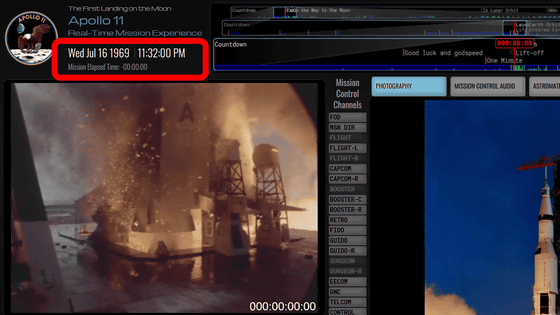
Related Posts:
in Web Service, Ride, Video, Posted by log1i_yk







